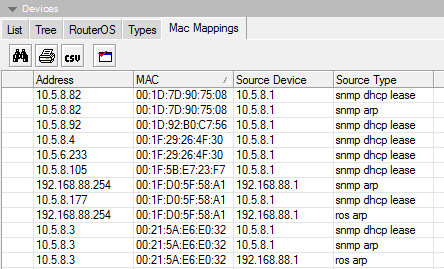

- COMMAND TO FIND MAC ADDRESS TABLE ON ROUTER SOFTWARE
- COMMAND TO FIND MAC ADDRESS TABLE ON ROUTER SERIES
Maximum of 31 characters and may include a–z, A–Z, 0–9, the dash character (-), the underscore character (_), and the period character (.).When you enter the ACL name, follow these naming conventions: The following Ethertype protocol values were added to the valid protocol list: bpdu-sap, bpdu-snap, dtp, lacp, pagp, vtp. This command was integrated into Cisco IOS Release 12.2(33)SRA. Support for this command on the Supervisor Engine 2 was extended to Release 12.2(17d)SXB. Add the ip keyword to the list of valid protocol names.


COMMAND TO FIND MAC ADDRESS TABLE ON ROUTER SERIES
On Catalyst 6500 series switches, this command is supported on Layer 2 ports only. If the specified MAC ACL does not exist on the interface or subinterface, all packets are passed.
COMMAND TO FIND MAC ADDRESS TABLE ON ROUTER SOFTWARE
If the access list denies the address, the software discards the packet and returns an Internet Control Message Protocol (ICMP) host unreachable message. If the MAC access list permits the address, the software continues to process the packet. After a networking device receives a packet, the Cisco IOS software checks the source MAC address of the Gigabit Ethernet, 802.1Q VLAN, or 802.1Q-in-Q packet against the access list. MAC ACLs are applied on incoming traffic on Gigabit Ethernet interfaces and VLAN subinterfaces. This command was integrated into Cisco IOS Release 12.2(33)SXH. This command was introduced on the Cisco 12000 series Internet router. Subinterface configuration (config-subif) Command History Release No access list is applied to the interface or subinterface. This is a decimal number from 700 to 799. Number of a MAC ACL to apply to an interface or subinterface (as specified by a access-list (MAC) command). No mac access-group access-list-number in Syntax Description To remove a MAC ACL, use the no form of this command. To use a MAC access control list (ACL) to control the reception of incoming traffic on a Gigabit Ethernet interface, an 802.1Q VLAN subinterface, an 802.1Q-in-Q stacked VLAN subinterface, use the mac access-group command in interface or subinterface configuration mode.


 0 kommentar(er)
0 kommentar(er)
